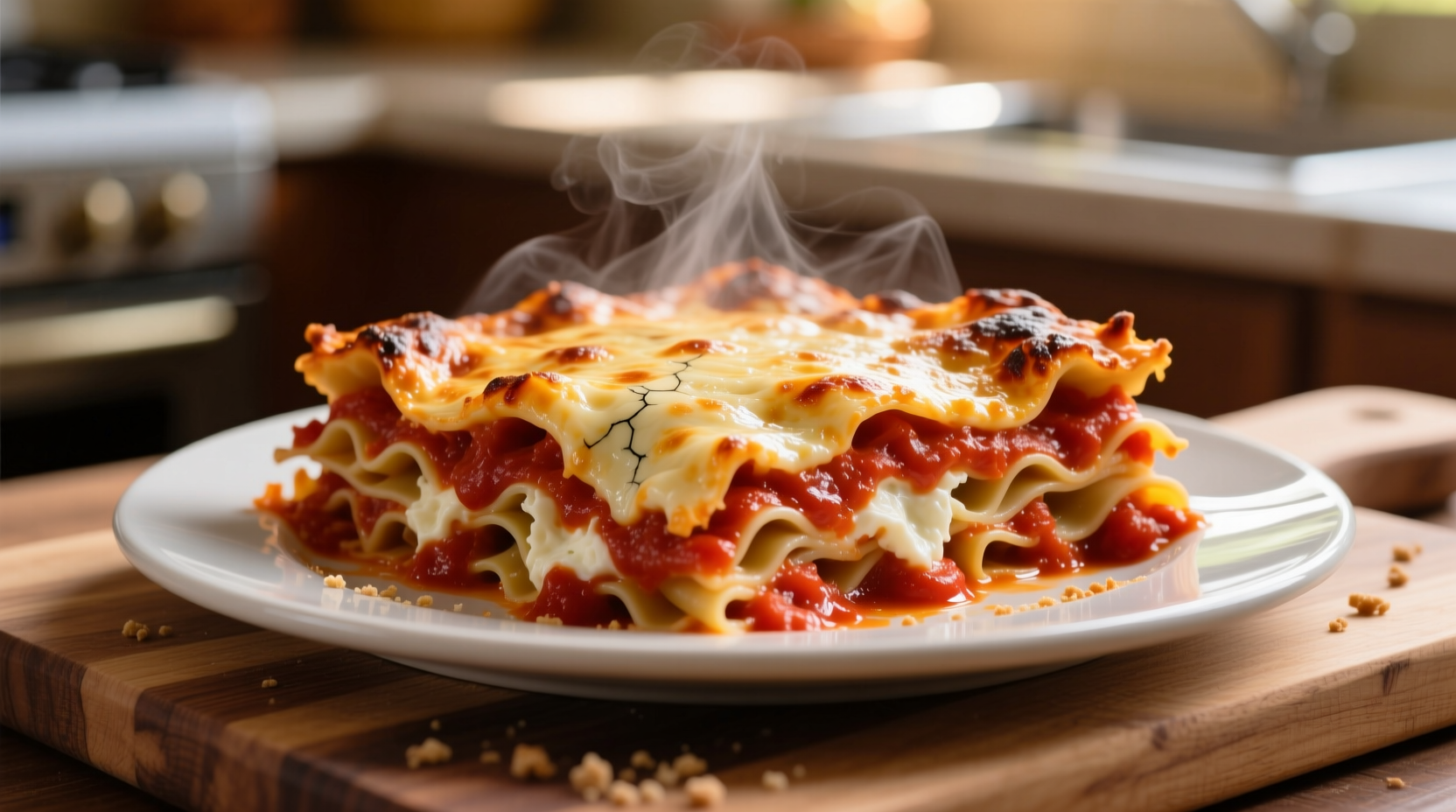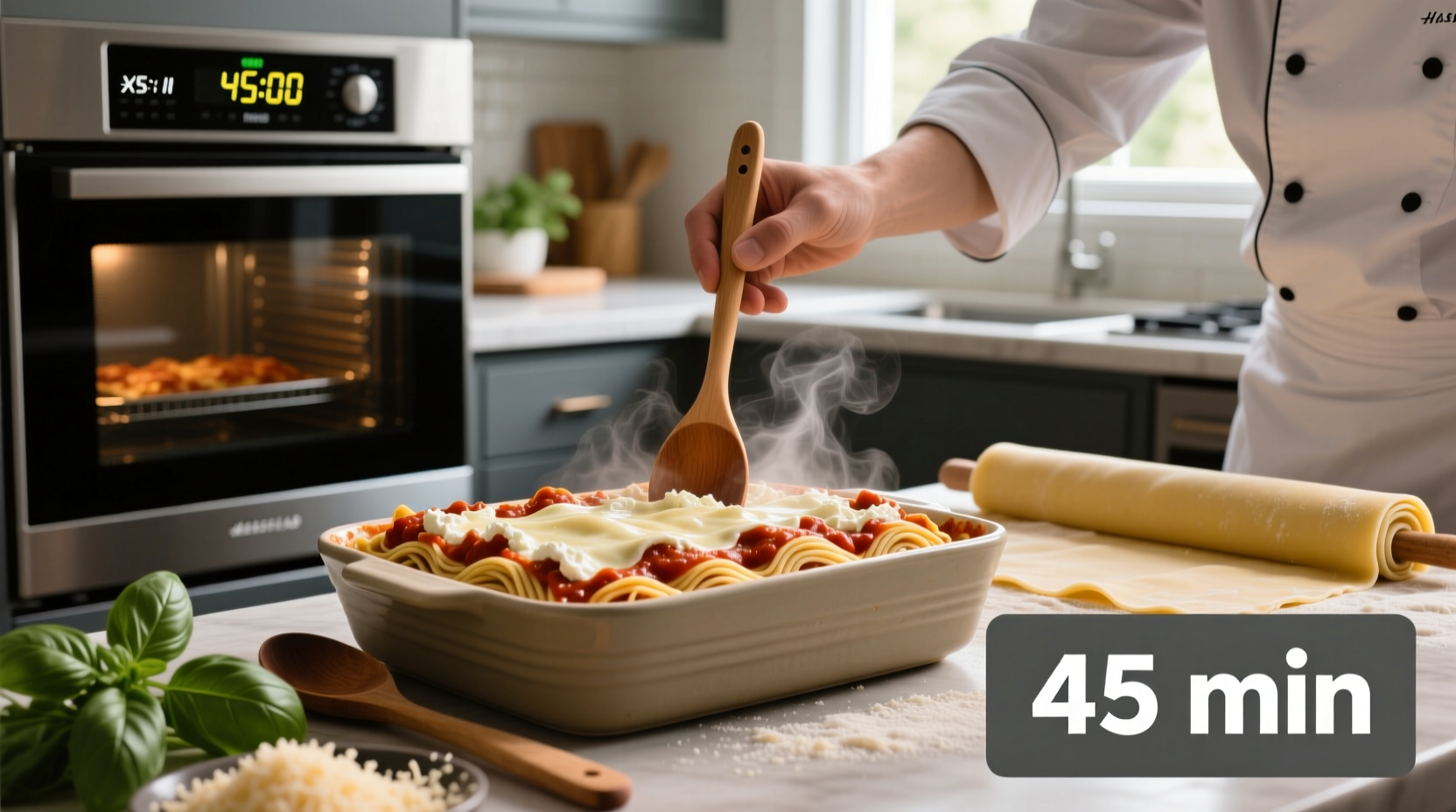Why Lasagna Cooking Time Isn't One-Size-Fits-All
Understanding why lasagna cooking times vary helps you adapt to your specific recipe and equipment. Unlike many dishes with fixed cooking times, lasagna requires flexibility based on several factors that affect how heat transfers through the layers.
| Lasagna Type | Prep Time | Baking Time | Total Time |
|---|---|---|---|
| Traditional Meat Lasagna | 30-45 min | 40-50 min | 70-95 min |
| No-Boil Noodle Version | 20-30 min | 50-60 min | 70-90 min |
| Veggie Lasagna | 25-35 min | 35-45 min | 60-80 min |
| Refrigerated Leftover | 5 min | 25-35 min | 30-40 min |
This comparison from USDA Food Safety guidelines shows how different preparations affect timing. Meat lasagnas generally need longer baking to ensure food safety, while no-boil noodles require additional moisture absorption time.
Your Step-by-Step Timing Roadmap
Follow this practical sequence for perfect lasagna timing, whether you're a first-time cook or refining your technique:
Preparation Phase (20-45 minutes)
While many focus solely on baking time, proper preparation sets your lasagna up for success. This phase includes:
- Sauce simmering (15-20 minutes for optimal flavor development)
- Noodle preparation (boiling traditional noodles for 8-10 minutes)
- Cheese mixture preparation (5 minutes)
- Meat browning (if using, 8-12 minutes)
Baking Process Timeline
Understanding the baking stages prevents common timing mistakes:
- 0-15 minutes: Initial heating phase where edges begin bubbling
- 15-30 minutes: Middle phase where heat penetrates to center
- 30-45 minutes: Final phase where top browns and flavors meld
- 45+ minutes: Only for no-boil noodles or frozen lasagna

How to Know When Your Lasagna Is Truly Done
Don't rely solely on the clock—use these sensory indicators to determine perfect doneness:
Visual Cues for Perfect Lasagna
Professional chefs use these visual markers rather than just timing:
- Edges: Sauce should be bubbling consistently around the pan perimeter
- Cheese top: Golden brown with some darker spots (not pale or burnt)
- Internal appearance: Cut a small corner to check noodle tenderness
- Steam: Visible steam rising when you remove foil (if used)
Temperature Verification
For food safety and perfect texture, use an instant-read thermometer:
- Insert into the center of the lasagna (avoiding pan bottom)
- Minimum safe temperature: 165°F (74°C) as recommended by USDA Food Safety and Inspection Service
- Ideal serving temperature: 170-175°F (77-79°C)
Common Timing Mistakes and How to Fix Them
Even experienced cooks encounter timing issues. Here's how to troubleshoot:
Problem: Soggy Bottom Layers
Cause: Insufficient baking time or excess moisture in ingredients
Solution: Bake 5-10 minutes longer, then let rest covered with foil for 10 minutes before serving. For future batches, drain ricotta thoroughly and use less watery vegetables.
Problem: Dry or Rubbery Texture
Cause: Overbaking or insufficient sauce between layers
Solution: Reduce next baking time by 5-8 minutes. Ensure each noodle layer has adequate sauce coverage—about 1 cup per layer for a standard 9x13 pan.
Advanced Timing Adjustments for Special Situations
These less common scenarios require specific timing modifications:
High-Altitude Cooking
At elevations above 3,000 feet, water boils at lower temperatures, affecting cooking times. Add 5-10 minutes to your baking time and increase oven temperature by 25°F (14°C) to compensate for reduced atmospheric pressure.
Convection Oven Settings
Convection ovens circulate hot air, cooking food 25% faster. When using convection:
- Reduce temperature by 25°F (14°C)
- Check for doneness 10-15 minutes earlier than standard recipes
- Rotate pan halfway through baking for even cooking
Why Resting Time Matters More Than You Think
Many home cooks skip the crucial resting period, ruining their lasagna's texture. Here's why 15 minutes matters:
- Allows layers to set for cleaner slicing
- Enables residual heat to finish cooking noodles evenly
- Helps flavors fully integrate throughout the dish
- Prevents scalding from overly hot filling
Professional test kitchens like America's Test Kitchen consistently find that lasagna served immediately after baking falls apart and lacks flavor depth.
Perfect Lasagna Timing Checklist
Before removing your lasagna from the oven, verify these five indicators:
- Internal temperature reaches 165°F (74°C)
- Sauce bubbles consistently around all pan edges
- Cheese topping is golden with some darker spots
- Noodles are tender when tested with a knife
- Center appears set, not liquidy











 浙公网安备
33010002000092号
浙公网安备
33010002000092号 浙B2-20120091-4
浙B2-20120091-4